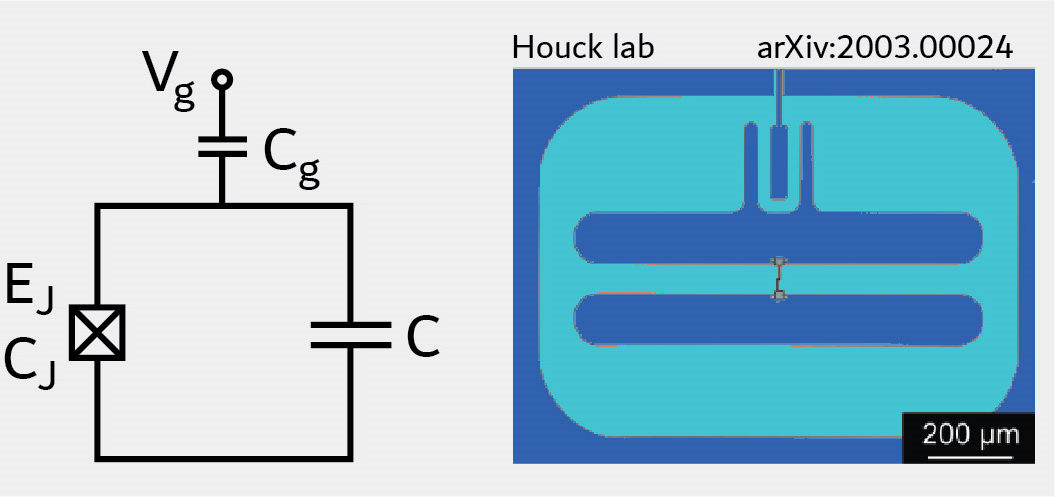Transmon#

The transmon qubit [Koch2007] is described by the Hamiltonian
expressed in discrete charge basis. Here, \(E_C\) is the charging energy,
\(E_J\) the Josephson energy, and
\(n_g\) the offset charge. Within the Transmon class,
charge-basis representation is employed with a
charge-number cutoff specified by ncut. This cutoff must be chosen sufficiently large for convergence.
An instance of the transmon qubit is initialized as follows:
transmon = scqubits.Transmon(EJ=30.02,
EC=1.2,
ng=0.3,
ncut=31)
From within Jupyter notebook, a transmon instance can alternatively be created with:
transmon = scqubits.Transmon.create()
This functionality is enabled if the ipywidgets package is installed, and displays GUI forms prompting for
the entry of the required parameters.
Wavefunctions and visualization of eigenstates#
Return the transmon wave function in number basis. |
|
|
Return the transmon wave function in phase basis. |
Plots transmon wave function in charge basis |
|
Alias for plot_wavefunction |
Implemented operators#
The following operators are implemented for use in matrix element calculations.
|
Returns charge operator n in the charge or eigenenergy basis. |
Returns operator \(e^{i\varphi}\) in the charge or eigenenergy basis. |
|
|
Returns operator \(\cos \varphi\) in the charge or eigenenergy basis. |
|
Returns operator \(\sin \varphi\) in the charge or eigenenergy basis. |
Computation and visualization of matrix elements#
|
Returns table of matrix elements for operator with respect to the eigenstates of the qubit. |
|
Plots matrix elements for operator, given as a string referring to a class method that returns an operator matrix. |
Calculates matrix elements for a varying system parameter, given an array of parameter values. |
|
Generates a simple plot of a set of eigenvalues as a function of one parameter. |
Estimation of coherence times#
Show plots of coherence for various channels supported by the qubit as they vary as a function of a changing parameter. |
|
Plot effective \(T_1\) coherence time (rate) as a function of changing parameter. |
|
Plot effective \(T_2\) coherence time (rate) as a function of changing parameter. |
|
|
Calculate the transition time (or rate) using Fermi's Golden Rule due to a noise channel with a spectral density spectral_density and system noise operator noise_op. |
|
\(T_1\) due to dielectric dissipation in the Josephson junction capacitances. |
|
Noise due to charge coupling to an impedance (such as a transmission line). |
Calculate the effective \(T_1\) time (or rate). |
|
Calculate the effective \(T_2\) time (or rate). |
|
|
Calculate the 1/f dephasing time (or rate) due to arbitrary noise source. |
Calculate the 1/f dephasing time (or rate) due to critical current noise. |